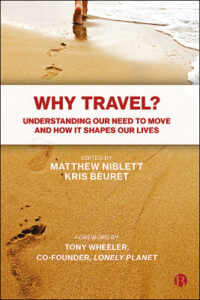Restricting visitor numbers: does tourism need saving from itself?

Machu Picchu, Peru, introduced visitor number restrictions in 2012. Image by Martin St-Amant (S23678) – Own work, CC BY-SA 3.0, https://commons.wikimedia.org/w/index.php?curid=8450312
4th July 2015
“Without controls, we know tourism can kill tourism” says the chief executive of the Association of British Travel Agents (ABTA).¹ Speaking at a recent conference, Mr Tanzer claimed that many European destinations are under such pressure from the high number of visitors that strains are being put “on the actual fabric of the city and on the residents there.” As a result, he warned, either “people will stop going there” or “you will get the footfall but not the value of tourism.”
A growing number of destinations worldwide are concerned about the impacts of high volume tourism and have chosen to start limiting visitor numbers. Ecologically sensitive destinations such as The Galapagos, Machu Picchu and Antarctica have famously had restrictions on tourist numbers for a few years now, with some success in limiting environmental damage. Last year the mayor of Barcelona suggested capping visitor numbers and limiting new hotel developments in order to prevent the city reaching ‘saturation limit’. Some smaller island destinations, like Iceland and the Seychelles, have voiced concern that visitor numbers now dwarf the local population (3 and 6 times respectively) and the way this has an associated impact on local people and environments, as well as the visitor experience. As the director general of the Icelandic Tourist Board said in 2014: “We can’t just endlessly receive more and more people at any particular tourist site and live under the assumption that we are offering the type of experience that people have paid for.”
The quality of visitor experience can be an important factor in decisions about restricting numbers. Offering an ‘authentic’ or ‘natural’ experience can greatly increase the perceived value of the destination and, correspondingly, the amount of money spent per tourist. Many destinations experience a ‘life-cycle’ in which they initially begin as places ‘off-the-beaten track’, accessible only to adventurous trend-setters or the very rich, but become centres for mass tourism whilst the trend-setters move on to look for new unique, untouched experiences. Some destinations have used strategies to avoid that route and to maintain high value tourism without encouraging mass footfall. Bhutan famously aims for low volume, high value tourism requiring visas for nearly all nationalities of tourist and a daily fee of $200-250: factors which combine to keep visitor numbers low.²
The search for ‘authenticity’ is a key motivation for many tourists, and notions of ‘authenticity’ often involve the exclusion of other visitors: the idea of a destination being ‘untouched’ and ‘off-the-beaten track’. This idea of ‘authenticity’ is often used to promote destinations even if, to some extent, what people view as ‘authentic’ is just a creation of the tourist industry. With international tourism continuing to grow apace, understanding these motivations is crucial if we are to plan for tourism that will better meet the needs of the tourists and, importantly, to help manage tourism so that destinations are not destroyed by their own success.
The ITC’s Why Travel? Project has been set up to explore the complexity of human travel motivations in the belief that a better and more realistic understanding of why we travel can and should be used to make better decisions about travel at the levels of the individual and the policy maker. The project brings together experts from across the arts, humanities and sciences, exploring cutting-edge research and modern trends, as well as looking back into our evolutionary past and human history for insights into why we travel in the ways we do. For more information on the project, including expert views and news stories, see www.whytravel.org
¹ http://www.travelmole.com/news_feature.php?news_id=2022658 and http://www.dailymail.co.uk/travel/travel_news/article-3661850/Travel-expert-warns-Europe-s-best-loved-cities-destroyed-Airbnb.html
² 133,480 international and regional tourists visited Bhutan in 2014. Compare this to Switzerland, a country of a similar geographic size, which had more than 9 million tourist arrivals in the same year.


